You want to sell your product, not your soul. So, how do you manage to write a product sales page without sounding like:
- A scam artist
- A copy and paste hack
- A bland, tepid, uninspired non-writer
- All of the above
That’s what you are going to learn in this part of our copywriting guide. Whether you’re creating traditional product pages or building promotional landing pages for your products, these principles will help you write more compelling copy. By the end of it I expect you to have a set of more consistent, higher converting, sales pages that will boost revenue for years to come for you business.

We’re going to be using a fictional beard oil product throughout the examples to demonstrate what writing these for real would sound like.
Let’s get started.
Here’s a product description worksheet you can use to jumpstart your product page copywriting.
Understand why your audience buys
The first thing you need to consider, before scribbling out one word of description, is why. Consider the customers persona you developed when you did audience research.
Why would this audience want to purchase your product? Why is your product the ultimate solution to their problem?
Why go with your beard oil and not your competition? Is your price better? Is your service better? Do you have expanded options?
The why goes beyond utility and into psychology of the buyer. You see, buyers don’t really need your product unless you’re selling water, air, or other basic goods. All other goods and services are wants, to varying degrees.
Your task is to make the buyer want your product so much that they convince themselves they need it. Click To Tweet
You’ll do that by starting with and addressing the why, not the what of your product.
Here’s an example to illustrate what I mean.
The What: 2 oz of beard oil* with a dropper top
The Why: Softens and moisturizes beard hair with an intoxicating scent and an easy to use dispenser for quick application.
As you can see, the why doesn’t just list features, it leads with benefits. Your product description should always answer why someone should choose your product and not the competition– why you’re different, why you’re better, and why you’re the obvious choice.
*By the way, you’ll notice that every example below is beard oil related. That’s on purpose to show that there are so many different ways to sell the same basic product.
Tell a story where the customer is the hero (with your product)
Everyone loves story time.
Tell a story, but don’t make your product the hero. Instead, make the prospective customer the hero. Then, insert your product as the answer to the problems. The product is not the hero, but the tool they use to get from where they are to happily ever after.
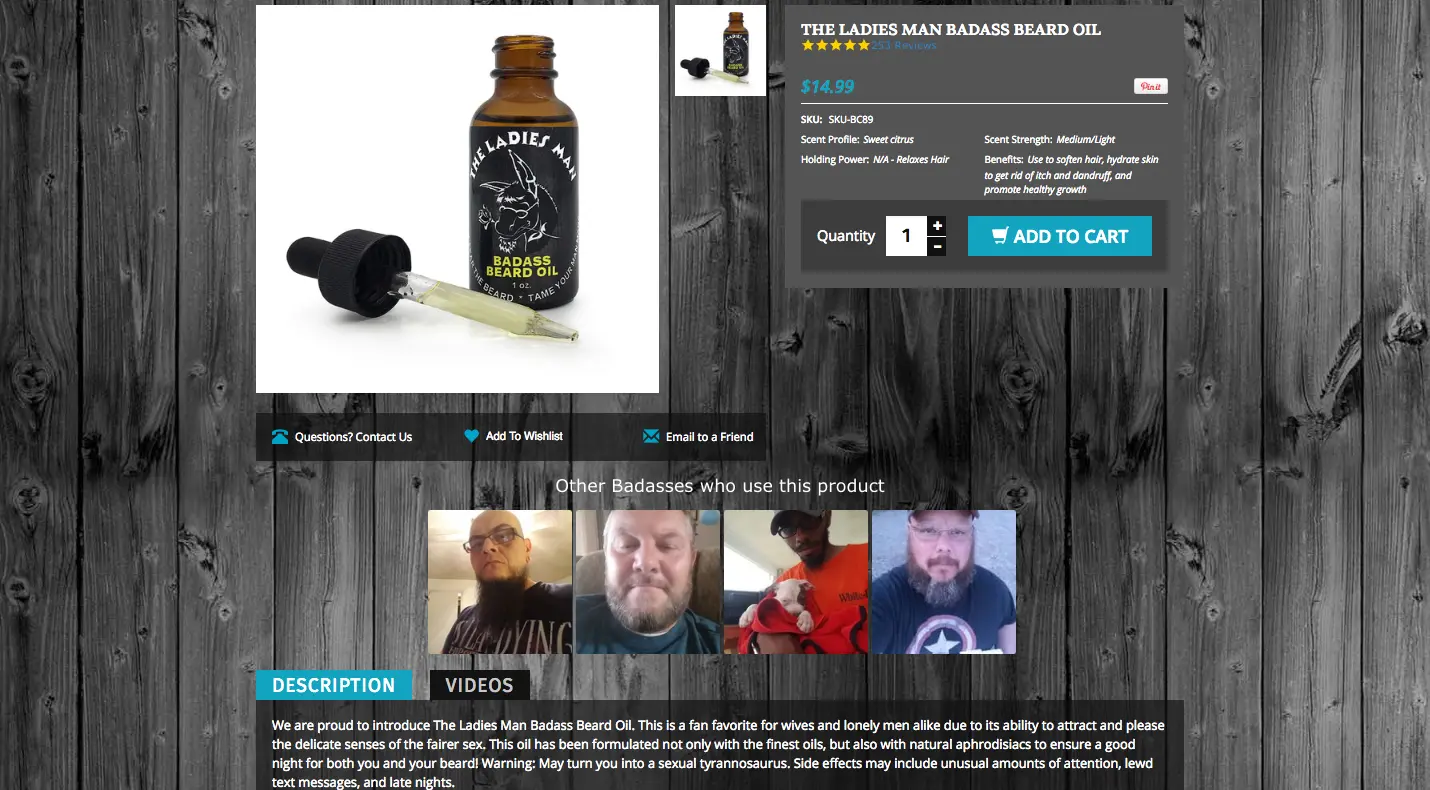
Here’s how to make the customer a hero in your product sales copy with examples using a fictional beard oil product:
-
Position the Customer as the Protagonist: In your marketing materials and product descriptions, speak directly to the customer as if they are the main character in a story. For instance, “You deserve a beard that not only looks good but feels great.”
-
Introduce the Beard Oil as a Solution: Present your beard oil as the tool or ally that helps the customer overcome their challenges or achieve their desires. For example, “With our natural beard oil, you can finally say goodbye to itchiness and embrace a beard that’s as healthy as it is stylish.”
-
Highlight the Transformation: Describe how the customer’s life or appearance will be transformed by using the product. Use imagery and language that paints a picture of success and satisfaction. “Imagine stepping out each day with a beard that turns heads and boosts your confidence.” This same approach works whether you’re writing product descriptions, giveaway copy, or landing page headlines.
-
Use Success Stories and Testimonials: Share stories of real customers who have experienced positive changes after using your beard oil. This not only provides social proof but also allows potential customers to see themselves in the success stories.
-
Engage with Interactive Content: Create interactive content like quizzes or guides that help customers find their perfect beard care routine, with your product being a key part of that journey.
By focusing on the customer’s journey and how your product enhances or improves that journey, you effectively make them the hero of the story, with your product being a pivotal tool in their quest.
Tackle objections

Your buyer will have objections. That doesn’t mean they won’t buy. It just means that you have to work extra hard to annihilate all the objections that come your way.
Start by being honest and reasonable about why someone may object to buying your product in the first place. Think of every possible reason why shouldn’t wouldn’t buy from you and then give them a reason to buy from you.
Here’s a sample list of common objections for any product to get you thinking with examples using our fictionl beard oil product.
- Uncertainty About Benefits: “I don’t see how beard oil can make a difference.”
- Some men might not be aware of the benefits beard oil offers, such as moisturizing the skin, reducing itchiness, and making the beard softer and more manageable.
- Perceived Complexity of Use: “It seems complicated to use.”
- The idea of adding another step to their grooming routine might seem daunting for those who prefer a more straightforward approach.
- Cost Concerns: “Beard oil is too expensive.”
- Some men might view beard oil as a non-essential or luxury item and could be hesitant to spend money on it.
- Dislike of Greasy Products: “I don’t want my beard to feel oily or greasy.”
- There’s often a concern that beard oil will leave the beard feeling greasy or heavy, which is a common misconception.
- Sensitivity to Fragrances: “I don’t like strong scents in grooming products.”
- Men with sensitive noses might be hesitant to use scented products, including beard oils.
- Unsure of Results: “I tried a beard product before and didn’t see any benefits.”
- Past experiences with other beard care products that didn’t meet their expectations can make some men skeptical.
- Natural Look Preference: “I prefer a more natural look.”
- Some men might believe that using beard oil will make their beard look overly styled or unnatural.
- Skin Sensitivities: “I have sensitive skin and worry about irritation.”
- Concerns about allergic reactions or skin irritation can deter men with sensitive skin from trying new grooming products.
- Unfamiliarity with the Product: “I’ve never used it before and don’t know where to start.”
- Lack of knowledge about how beard oil works or how to apply it can be a barrier.
- Preference for a Rugged Look: “Beard oil seems too fussy; I like a rugged look.”
- Some men might associate beard oil with high-maintenance grooming, preferring to maintain a more rugged or natural appearance.
Addressing these objections through education, demonstrations, testimonials, and offering trial sizes or money-back guarantees can help overcome common product objections and are pieces of micro-copy you should include on most pages. You can also address objections by offering product giveaways to let customers try before they buy, or creating a waitlist that builds anticipation and reduces purchase anxiety.
Highlight the testimonials
Testimonials absolutely deserve a place on your product page. And, what’s more, you should be mindful of them when creating your product’s copy.
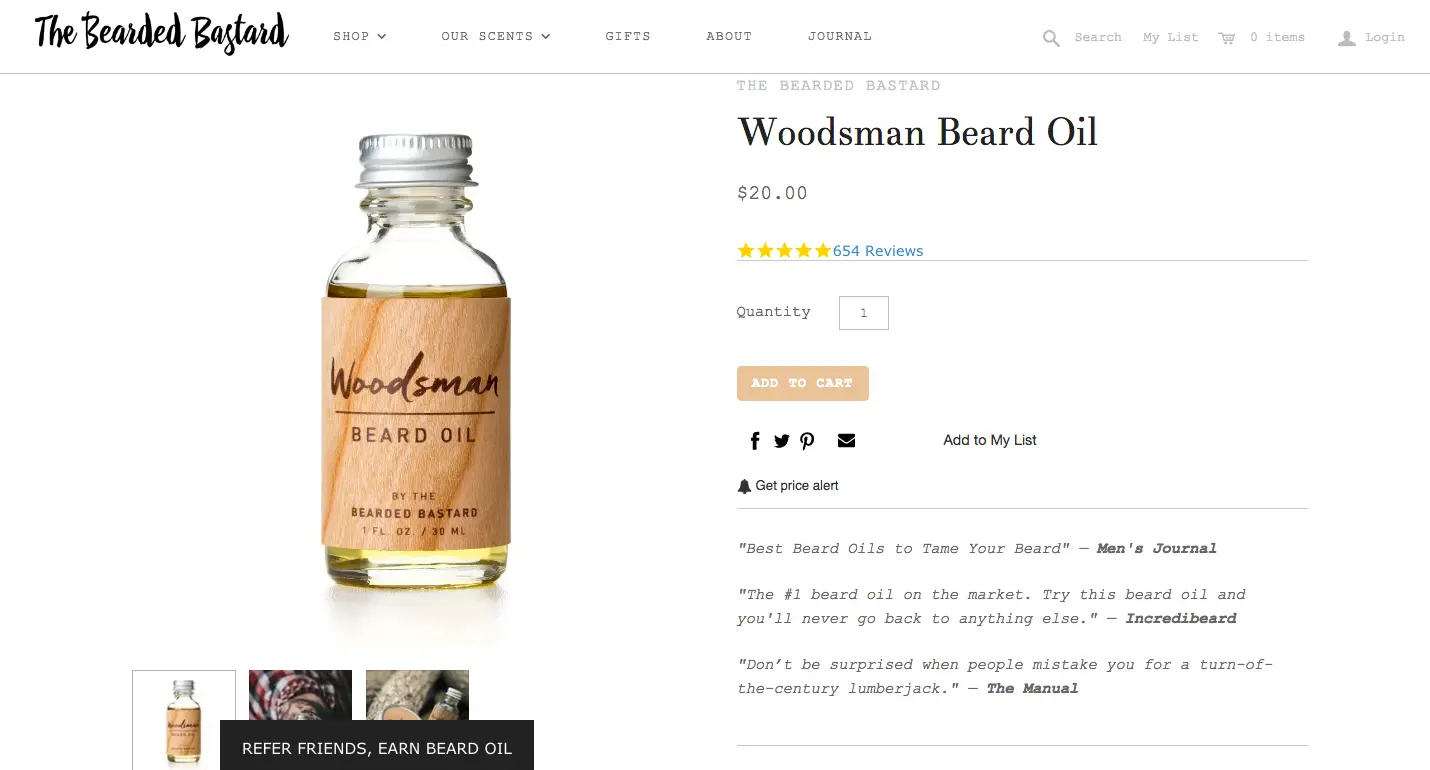
Look at what people tell you again and again in their product reviews or testimonials. What problems were they facing before using your product? (Their answers can become part of the story you tell in your description.) You can collect testimonials through email campaigns or by running referral programs that encourage customers to share their experiences.
You can also prominently feature testimonials on your product page.
What if you have no reviews? Consider bringing in your staff. It’s the perfect opportunity to label a product as a “staff favorite” or “top pick”.
Use your Brand Voice
Don’t forget to leverage your brand voice guidelines. If you don’t have one it’s easy to create a brand voice that will keep your copy consistent. After you pen your product page, make sure it sounds like the rest of your brand. It’s important to be consistent. Carry the same voice throughout your entire user experience.
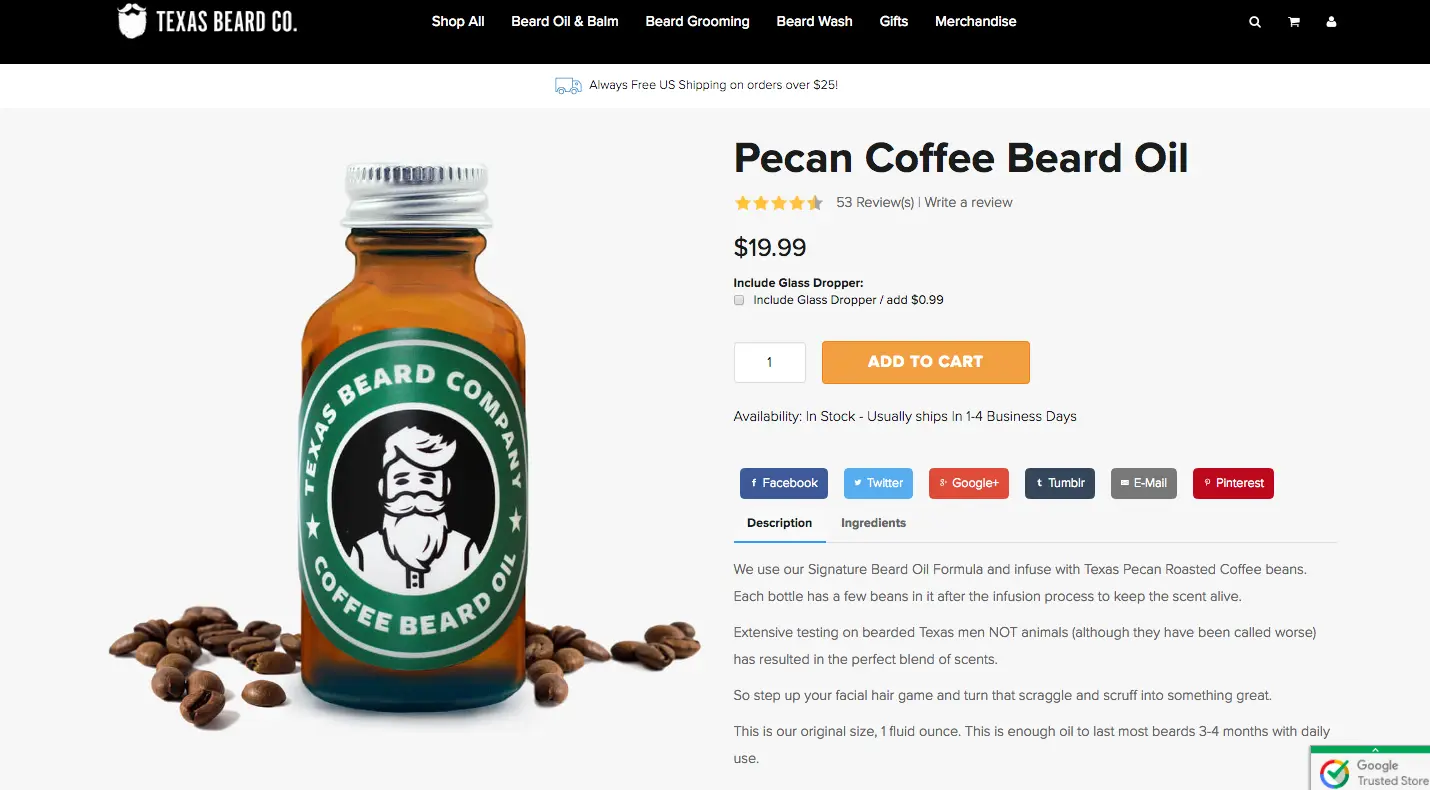
Also, remember that every audience is slightly different, but your specific audience (as luck would have it) reflects who you are as a brand. If you’re irreverent, the type of people who gravitate to you probably share that same quality. So, the key here is to be you– be authentic. They’re your people, they’ll get you.
Provide a Ton of Information
Chances are, the buyer is actively talking themselves out of the product. Your job is to talk them into buying it.
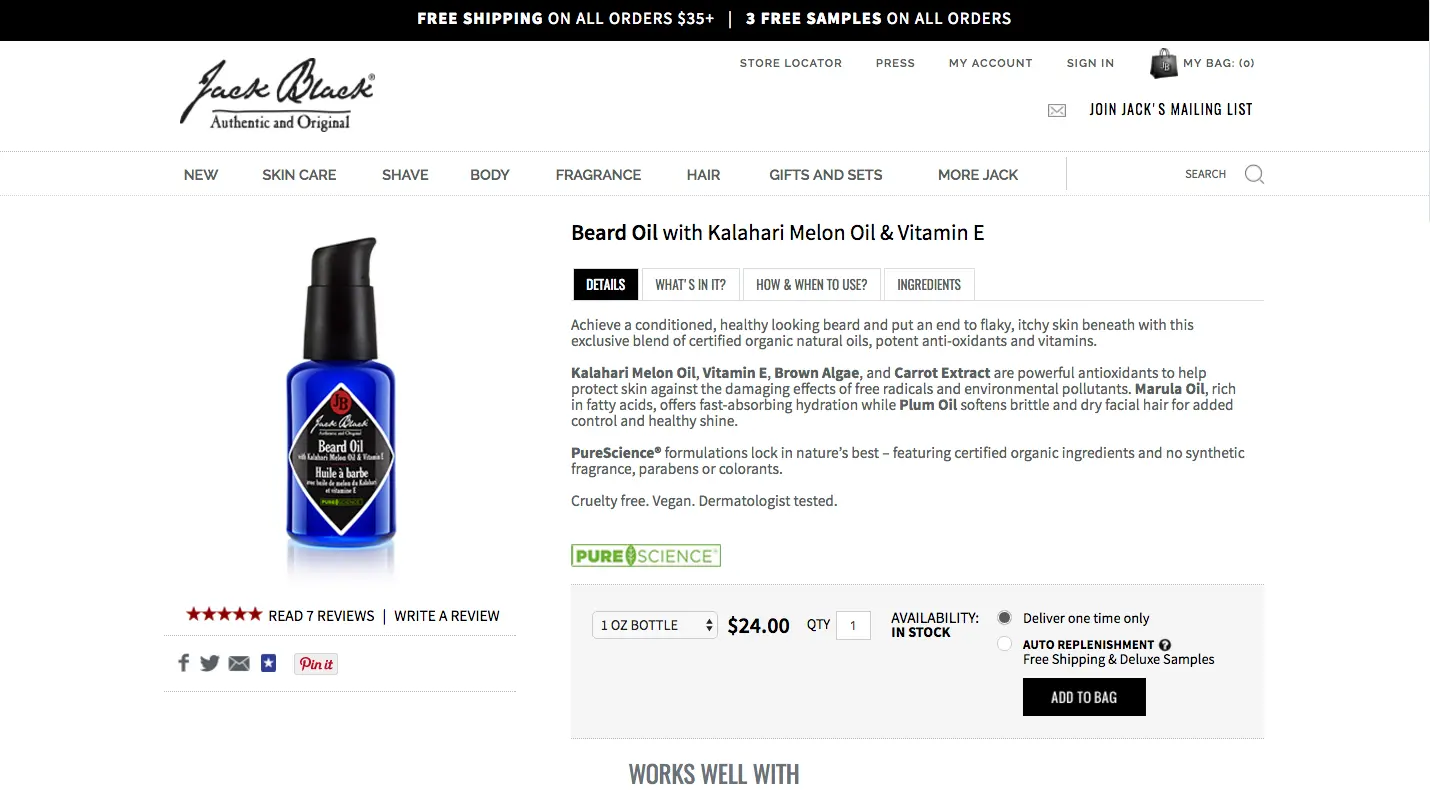
You’ll do that by providing a generous amount of information about the product, such as size, amount, color, measurements, dimensions, etc. I recommend throwing in as many descriptors as humanly possible.
Overwhelming the buyer with information won’t really overwhelm them. It will inspire buyer confidence. They’ll trust that you actually know what you’re talking about. And, one by one, you’ll melt away any lingering objectives they may have.
Put information in a FAQ you’ve developed from customer conversations.

FAQs make my heart sing, what about you? Think about all of those times that you’ve had questions about a product, searched for the answers, then gave up looking, and decided to go with the competition. It happens a lot– just don’t let it happen to you.
Seriously consider adding a “Frequently Asked Questions” section to your product description. This is still part of copywriting. You’re still using this opportunity to sell by being completely upfront about your product. Answer as much as possible so that you gain the buyer’s trust.
Sometimes, buyers skip all of the description and head straight to the FAQs if available. You’ll want to keep these questions and answers concise and informative.
Make it an Easy Read
Now, here’s the balancing act: on one hand, you need to provide an overwhelming amount of information for your customer so he can feel confident in buying from you.
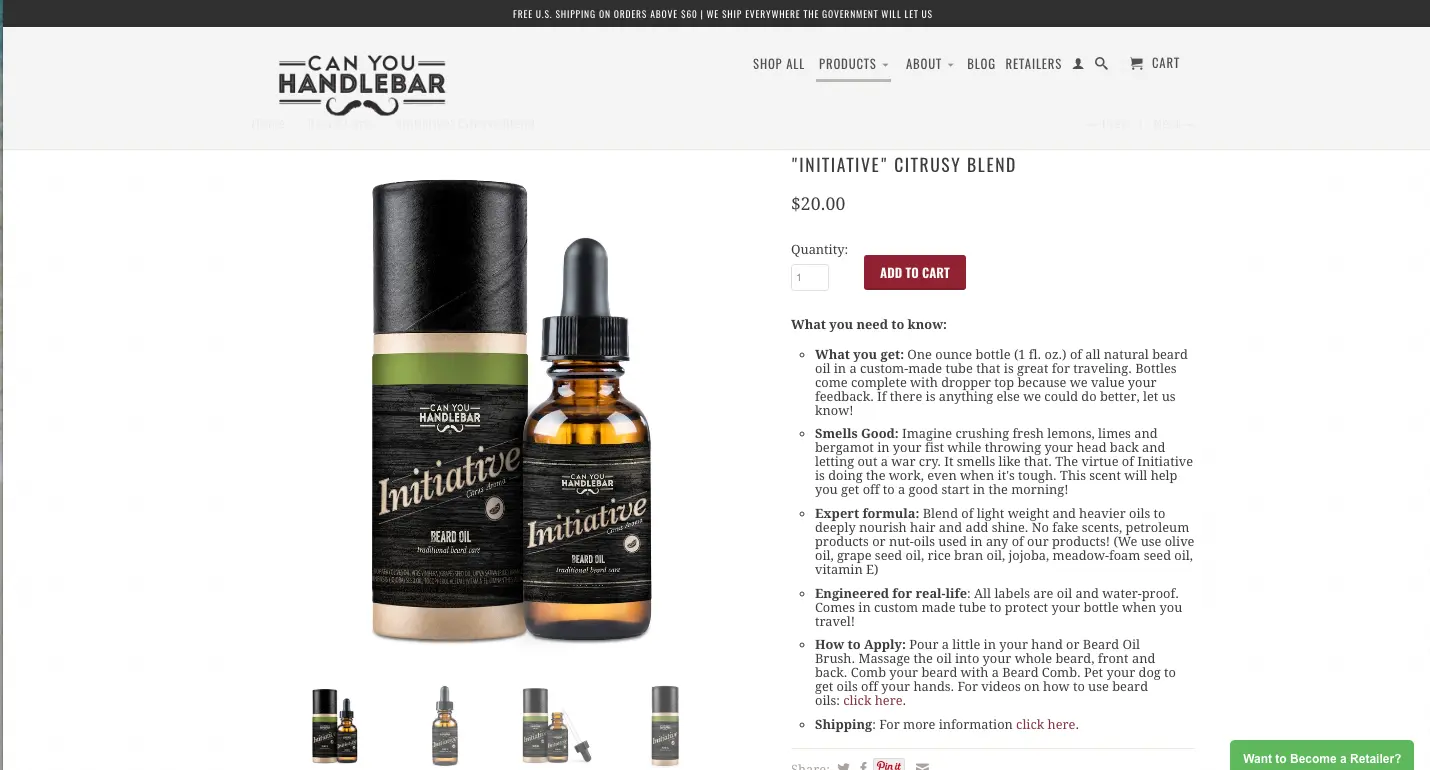
On the other hand, you don’t want the information to be a jumbled wall of text that actually does overwhelms the reader.
So, set out to make your product page easy to read. Here are a few tips:
To make a lot of text on your product sales page easy to read and engaging, consider the following strategies:
-
Use Headings and Subheadings: Break up the text with clear, descriptive headings and subheadings. This helps readers scan the content and find the sections most relevant to them.
-
Implement Bullet Points and Lists: Whenever possible, use bullet points or numbered lists to present features, benefits, or steps. This makes the information more digestible and easier to scan.
-
Short Paragraphs: Keep paragraphs short – ideally no more than 2-3 sentences each. Long blocks of text can be intimidating and difficult to read, especially on mobile devices.
-
Highlight Key Points: Use bold or italic text to emphasize important points or key benefits. This draws the reader’s eye to the most critical information.
-
Readable Font and Size: Choose a clear, easy-to-read font and an appropriate size. Avoid overly decorative fonts, especially for body text, as they can be challenging to read.
-
Use of White Space: Don’t be afraid of white space. Adequate spacing between lines and paragraphs improves readability and reduces visual clutter.
-
Incorporate Visuals: Break up text with relevant images, infographics, or videos. Visuals can help explain complex information and add a break in the text.
-
Interactive Elements: Consider using collapsible sections, tabs, or accordions for lengthy content like detailed product specifications. This keeps the page cleaner and lets users expand only the information they’re interested in.
-
Break up text with Testimonials: Break up descriptive text with customer testimonials or reviews. These provide social proof and can be more engaging to read than standard product descriptions.
-
Progressive Disclosure: Provide the most important information first, then offer additional details for those who want more. This can be done through “Read more” links that expand to reveal more content.
Don’t forget about the strong call to action!
Buttons can be missed opportunities to sell. Don’t be boring with a simple “Buy” call to action.
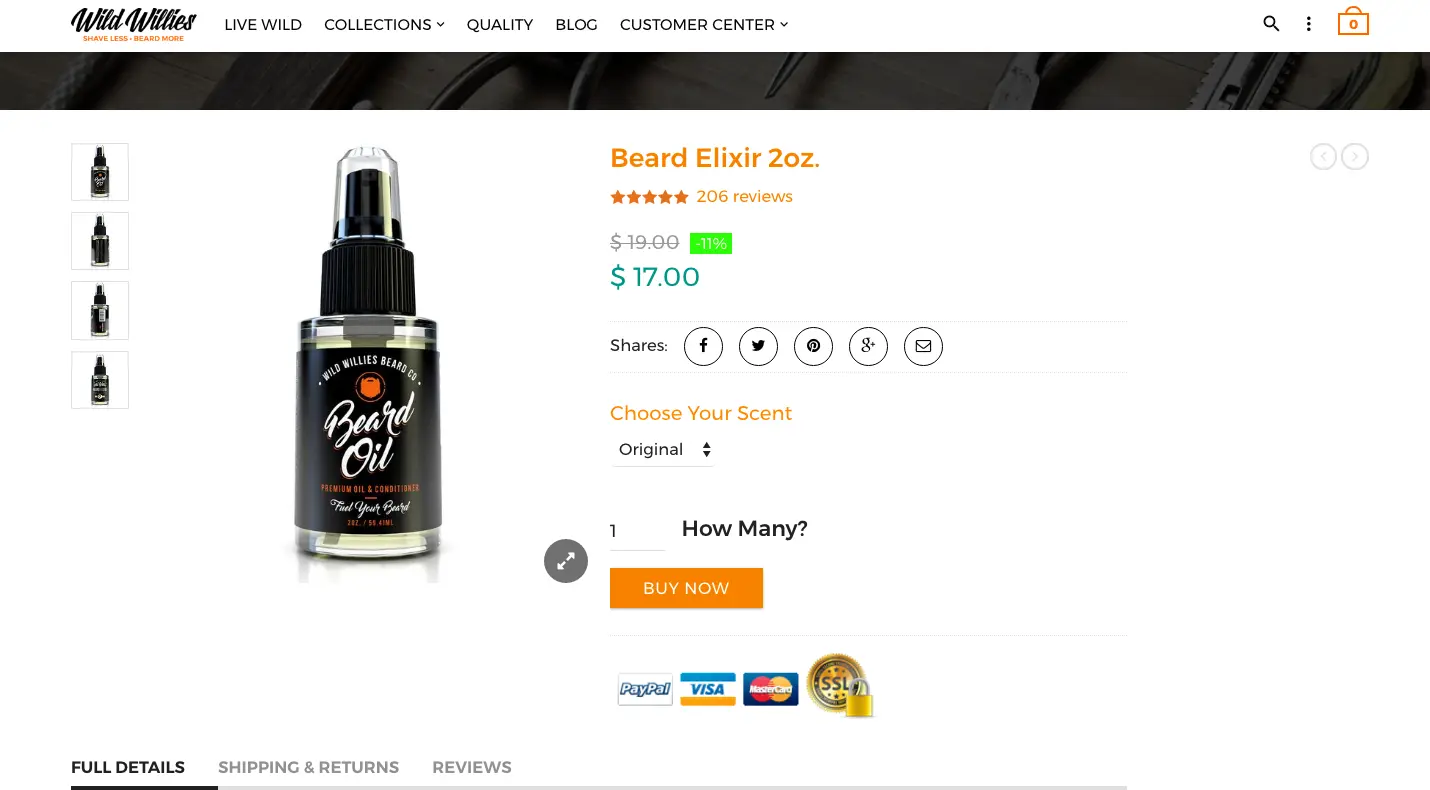
Consider using a descriptive call to action that makes the buyer feel excited about the purchase. Here are a few tips and ideas for your call to action to consider:
-
Use Action-Oriented Language: “Buy Now for Your Beard” or “Experience a Better Beard Now.”
-
Keep it Brief and Clear: “Buy Beard Oil Now” or “Add to Cart - Beard Elixir.”
-
Create a Sense of Urgency or Scarcity: “Limited Time: Get Your Beard Oil Before It’s Gone” or “Order Now - Only a Few Bottles Left!”
-
Highlight the Benefit: “Get a Softer Beard Today” or “Transform Your Beard Now.”
-
Use Contrasting Colors: A button in a bold color like forest green or deep amber, contrasting with the website’s background.
-
Size and Placement Matter: A prominent button placed right below the product description or next to the pricing details.
-
Utilize White Space: Ensure there’s enough space around the CTA button to make it stand out without clutter.
-
Test Different Versions (A/B Testing): Try variations like “Unlock Your Beard’s Potential” versus “Nourish Your Beard Now” to see which resonates more.
-
Make It Mobile-Friendly: The button should be easily tappable on mobile screens.
-
Reassure Security and Ease: Use phrases like “Secure Checkout” or “Shop Safely” on the button or nearby.
-
Personalize When Possible: For returning customers, “Continue Your Beard Journey” or “Restock Your Favorite Oil.”
-
Include Secondary CTAs: For those not ready to buy, options like “Learn More About Beard Care” or “Read Reviews” can be helpful.
-
Avoid Using Jargon: Use straightforward language, such as “Order Beard Oil” instead of “Procure Premium Follicle Elixir.”
-
Focus on Value, Not Just Transaction: Emphasize the experience or results, like “Start Your Beard Transformation” or “Elevate Your Grooming Game.”
-
Brand Consistency: Ensure that the CTA aligns with the overall brand voice theme of natural care and luxury grooming that a beard oil brand may represent.
Related Resources
Ready to apply these product page copywriting principles across your marketing?
- Landing Page Copywriting - Apply these storytelling techniques to your landing pages
- Inspirational Landing Page Examples - See effective product copy in action
- Brand Voice Guide - Develop a consistent voice across all your product pages
- Referral Reward Programs - Turn satisfied customers into brand advocates
Always Be Selling
In the world of e-commerce and digital marketing, the adage “Always Be Selling” takes on a profound significance. This doesn’t imply a relentless push of sales pitches or an overwhelming barrage of product features. Instead, it’s about cultivating a mindset that every element of your online presence, from your website design to customer interactions, contributes to building a relationship that leads to a sale.
Your product page isn’t just a static billboard; it’s a dynamic, engaging narrative of your product’s journey and its impact on the customer’s life. Every FAQ answered, every testimonial shared, and every detailed description is a step towards convincing a potential customer of the value your product adds. It’s about selling an experience, a solution, or a dream - not just a product.
Read more Copywriting for Conversions with the next chapter:
7. Inspirational Examples
Steal from these inspirational landing page copywriting examples.

